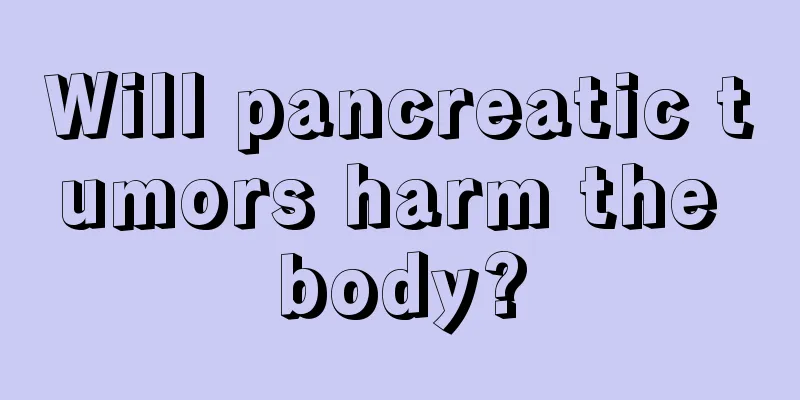Will pancreatic tumors harm the body?

|
Clinically, pancreatic tumors can be divided into two types: benign pancreatic tumors and malignant pancreatic tumors. In the case of benign pancreatic tumors, the patient's symptoms are not very serious. If not treated in time, pancreatic tumors will pose a great threat to the patient's body. Let's learn about the harm of pancreatic tumors to the body, hoping to help you understand this disease better. The main clinical manifestations of pancreatic tumors are upper abdominal distension or dull pain, and upper abdominal masses. Followed by weight loss, jaundice, gastrointestinal bleeding, various gastrointestinal symptoms and liver metastasis. In addition to jaundice, physical examination may also reveal upper abdominal tenderness. In the late stage, a nodular, hard mass can be felt in the upper abdomen. If jaundice is accompanied by an enlarged gallbladder, it is an important evidence of a pancreatic tumor. Due to bile stasis, an enlarged liver can often be palpated. If the tumor compresses the splenic vein or splenic vein thrombosis occurs, an enlarged spleen can be palpated. Pancreatic tumor is a highly malignant disease, but it is difficult to detect it early, and the operation is very difficult. Even after the operation, the long-term survival effect is worse than that of ordinary tumors, so it will cause great harm to the human body. So, what are the harms of pancreatic tumor to the body? Because they are all advanced patients, some patients will experience pain, and some are so severe that they can't sleep all night, so the impact on people is very large. Early pancreatic tumors may not cause any symptoms because the lesions are small and confined to the pancreas. As the disease progresses, the tumor gradually increases in size. When it involves the gallbladder, pancreatic duct and peripancreatic tissue, symptoms such as upper abdominal discomfort and dull pain, jaundice, weight loss, loss of appetite, indigestion, and fever may appear. Among them, jaundice is the most prominent. Obstructive jaundice is the most prominent manifestation of pancreatic head cancer, with an incidence rate of more than 90%. In the early stage, there may be no jaundice in the pancreatic body and tail. Jaundice is usually persistent and progressively deepens. In case of complete obstruction, the stool may be clay-colored, and the skin may be brown or bronze-colored, accompanied by itching. After reading the above introduction about the harm of pancreatic tumors to the body, do you know the harm of this disease? I would like to remind you that the treatment of early pancreatic tumors is mainly surgery. If the surgery is completely removed, the patient has the possibility of long-term survival. Pancreatic tumor: http://www..com.cn/zhongliu/yxa/yxzl.html |
<<: Experts answer your questions: Chemotherapy for renal tumors
>>: Will pancreatic tumor recur after removal?
Recommend
What are the early symptoms of Helicobacter pylori
Helicobacter pylori is a common bacterium. Many p...
What are the prevention methods for uterine cancer
In recent years, uterine cancer has become one of...
Knee patella fracture
In common parlance, the bone connecting the calf ...
Can patients with nasopharyngeal cancer eat chicken, duck, fish and meat?
Nasopharyngeal cancer patients can eat chicken, b...
Treatment methods for ovarian cancer
Treatment of ovarian cancer, ovarian cancer threa...
What should I do if my teeth hurt at night?
Speaking of toothache, this may be something that...
What are the treatments for pityriasis versicolor?
When summer comes, I believe many of my friends w...
Does black tea warm the stomach?
Black tea is a food that we can often enjoy in ou...
What's wrong with sweating after a full month of caesarean section
Sweating during the full moon is not unfamiliar t...
What is the difference between lumbar disc bulging and protrusion
Lumbar disc herniation and bulging are both very ...
Can I use gasoline to clean the range hood?
Many people will use some very special methods to...
Menstrual standards for endocrine therapy of breast cancer
Breast cancer patients need to correctly judge th...
What is the traditional Chinese medicine prescription for tonifying the kidney?
The kidney is a very important organ in the body,...
How to grow roses
Many people like roses. Roses have many similarit...
Will rectal cancer during pregnancy affect the fetus?
The cause of rectal cancer is still unclear. Its ...









